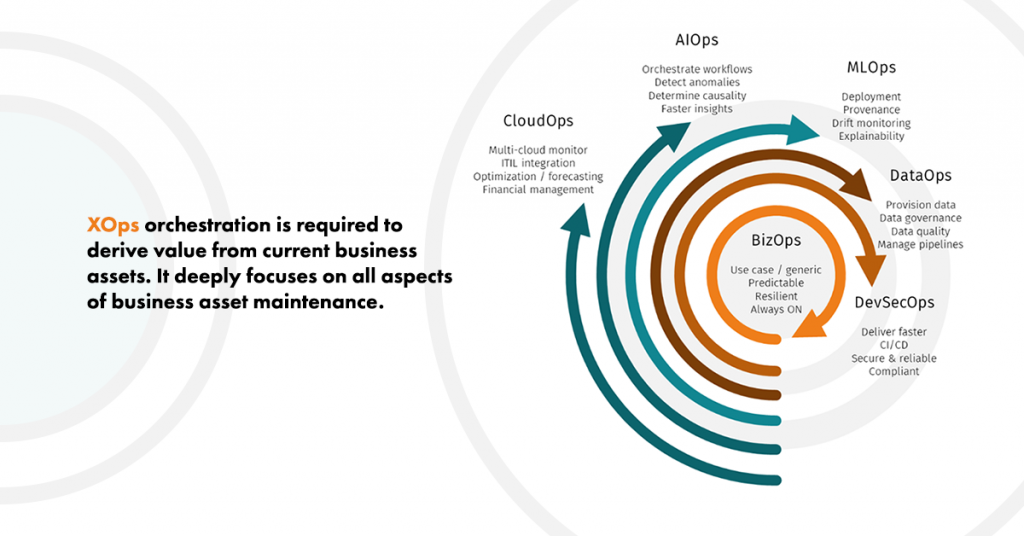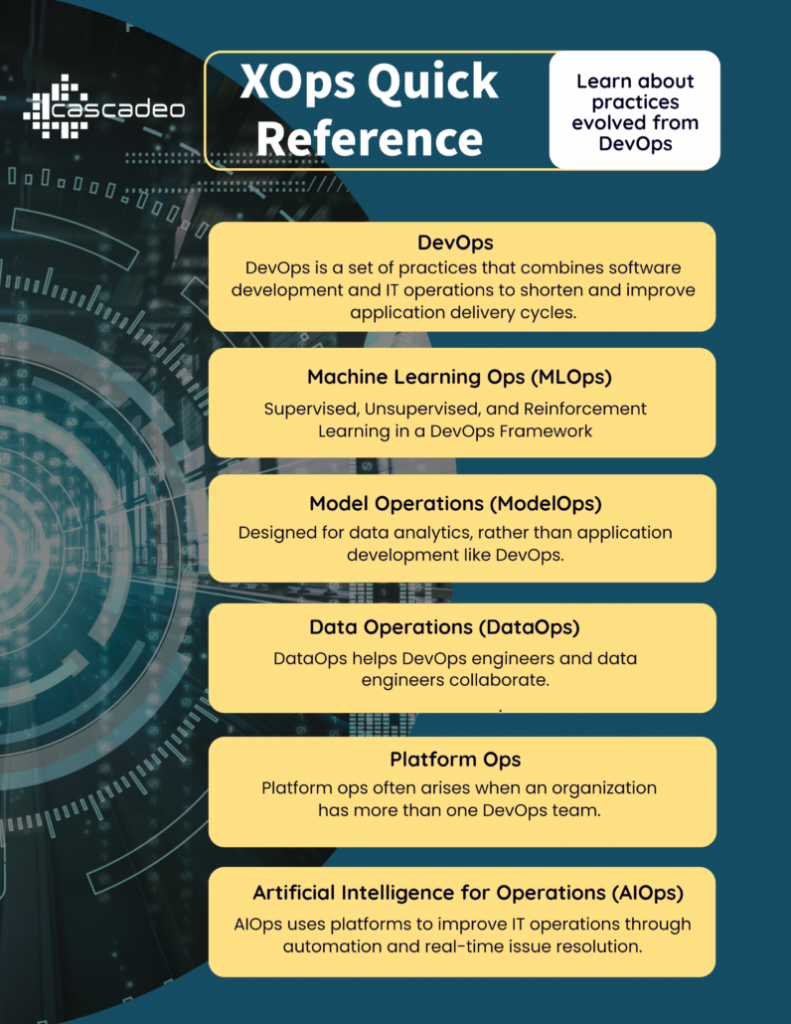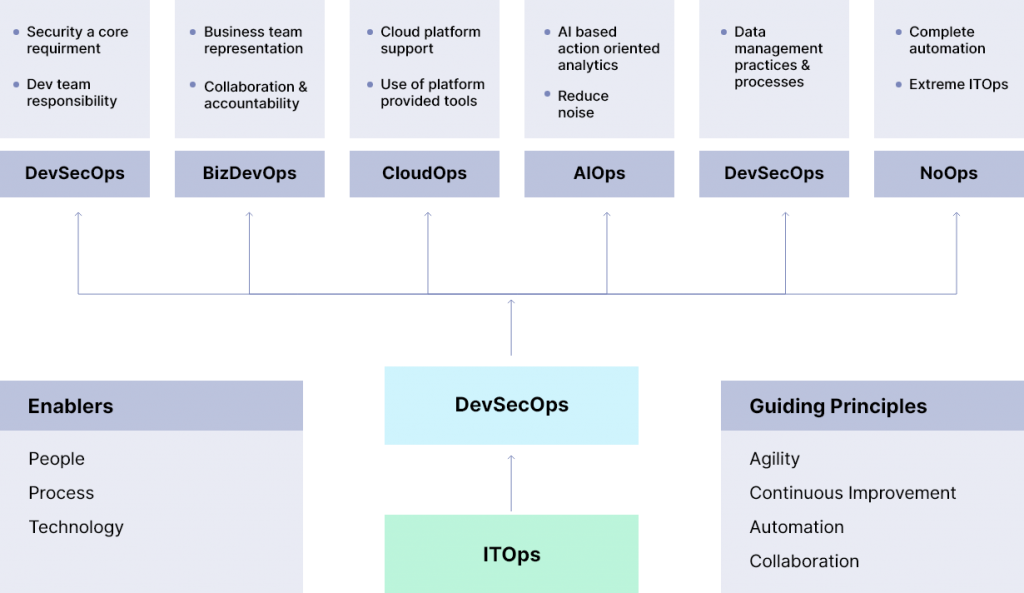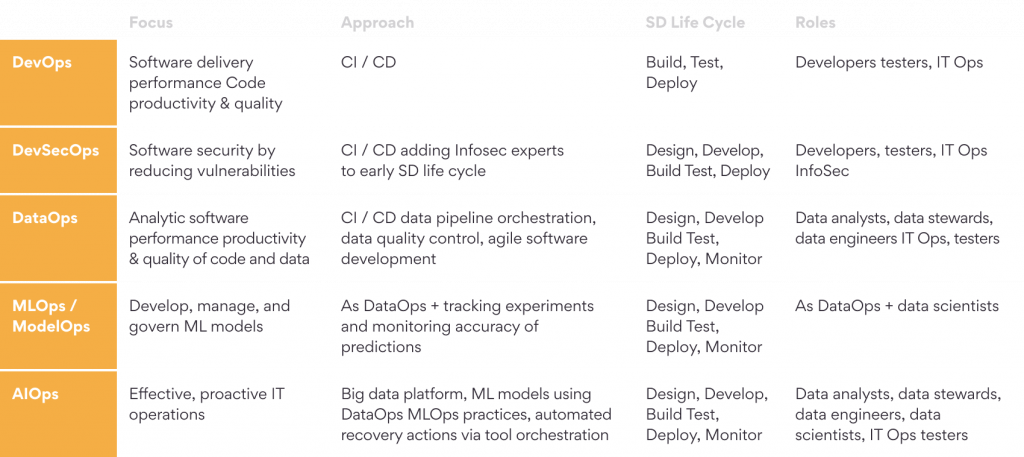What is XOps?
XOps stands for “Cross-functional Operations,” which refers to the practice of bringing together teams and individuals from different functional areas (such as engineering, product, design, etc.) to collaborate and work on operational tasks and projects. This approach aims to improve efficiency, communication, and alignment across the organization, and can be applied to a wide range of business operations, such as product development, customer service, and supply chain management.

Why we need XOps?
XOps is seen as necessary because it helps organizations to be more agile and responsive to changing market conditions and customer needs. By breaking down silos and fostering cross-functional collaboration, XOps can help to improve communication, increase efficiency, and reduce the time it takes to bring new products and services to market. Additionally, XOps can help to improve alignment between different teams and functions, which can lead to better decision making, more effective use of resources, and improved customer satisfaction.
Another reason XOps is important is that it allows organizations to better handle the complexity and dynamism of modern business operations. With the increasing pace of technological change, organizations need to be able to adapt quickly to new tools and processes in order to remain competitive. By bringing together teams and individuals with different skills and perspectives, XOps can help organizations to be more innovative and adaptable in the face of rapid change.
Finally, XOps is important because it can help organizations to better understand and respond to the needs of their customers. By involving cross-functional teams in the customer experience, organizations can gain a more holistic view of customer needs and develop more effective strategies for meeting those needs.

Advantage of XOps?
There are several advantages of implementing XOps in an organization, including:
- Improved efficiency: By breaking down silos and fostering cross-functional collaboration, XOps can help to improve communication and reduce the time it takes to complete projects and tasks.
- Increased innovation: By bringing together teams and individuals with different skills and perspectives, XOps can help organizations to be more innovative and adaptable in the face of rapid change.
- Better alignment: XOps can help to improve alignment between different teams and functions, which can lead to better decision making and more effective use of resources.
- Improved customer satisfaction: By involving cross-functional teams in the customer experience, organizations can gain a more holistic view of customer needs and develop more effective strategies for meeting those needs.
- Better problem solving: By having a cross functional approach to problem solving, it allows for a more thorough examination of the problem, resulting in solutions that are more comprehensive.
- Improved communication: XOps encourages communication between different teams and functions, which can lead to better understanding of each other’s roles and responsibilities, resulting in better collaboration and cooperation.
- Increased employee engagement: XOps can help employees to feel more connected to the organization’s goals and objectives, which can lead to increased engagement and motivation.
How to implement XOps?
Implementing XOps in an organization can be a complex and challenging process, but it can be broken down into several key steps:
- Define the problem or opportunity: Identify the specific business problem or opportunity that XOps is intended to address.
- Build a cross-functional team: Assemble a team of individuals from different functional areas of the organization, such as engineering, product, design, etc.
- Establish clear roles and responsibilities: Define the roles and responsibilities of each team member and ensure that everyone understands their part in the process.
- Develop a communication plan: Create a plan for how the team will communicate and collaborate, including regular meetings, shared documents, and other tools.
- Define metrics for success: Identify the metrics that will be used to measure the success of the XOps initiative, such as increased efficiency, improved customer satisfaction, or reduced time to market.
- Create a feedback loop: Establish a system for regularly collecting and analyzing feedback from team members and stakeholders, and use that feedback to make adjustments and improvements to the XOps process.
- Continuous improvement: Continuously review and improve the process by regularly assessing the outcome, and making changes as necessary.
- Foster a culture of collaboration and transparency: Encourage an environment where team members feel comfortable sharing ideas and feedback, and where information is easily accessible to all stakeholders.

DevOps Vs XOps: Difference between DevOps and XOps
DevOps and XOps are related but distinct concepts.
DevOps is a set of practices and tools that are used to improve the collaboration and communication between development and operations teams. The goal of DevOps is to automate the software development and delivery process, and to reduce the time it takes to get new features and updates to customers. DevOps practices include continuous integration, continuous delivery, and infrastructure as code.
XOps, on the other hand, is a broader concept that aims to bring together teams and individuals from different functional areas (such as engineering, product, design, etc.) to collaborate and work on operational tasks and projects. XOps is not limited to development and operations teams, it can be applied to a wide range of business operations, such as product development, customer service, and supply chain management.
In summary, DevOps is a specific practice focused on improving the collaboration and communication between development and operations teams. XOps is a broader concept that aims to foster cross-functional collaboration and improve efficiency across the organization. Both DevOps and XOps share some common goals such as improved communication, increased efficiency, and reduced time to market, but the scope of their application is different.

List of popular XOps Tools?
There are many different tools that can be used to support XOps initiatives in an organization. Here is a list of some popular tools in XOps:
- Jira: A project management tool that allows teams to track and manage tasks, bugs, and issues across different functional areas.
- Confluence: A collaborative documentation and information-sharing tool that can be used to share information and collaborate across teams.
- Trello: A visual project management tool that can be used to organize tasks and track progress across different functional areas.
- Slack: A communication tool that allows teams to chat, share files and information, and collaborate in real-time.
- Zoom: A video conferencing tool that can be used for meetings and remote collaboration.
- Microsoft Teams: A collaboration platform that includes chat, video conferencing, and file storage capabilities.
- Asana: A project management tool that helps teams to organize, track, and manage tasks and projects across different functional areas.
- Google Suite (Drive, Docs, Sheets, etc): A set of productivity tools that can be used to share and collaborate on documents, spreadsheets, and presentations.
- Monday.com: A project management tool that allows teams to plan, track and manage tasks and projects in an organized way.
- Notion: A productivity tool that allows teams to organize and share information and collaborate on tasks and projects.
I’m a DevOps/SRE/DevSecOps/Cloud Expert passionate about sharing knowledge and experiences. I am working at Cotocus. I blog tech insights at DevOps School, travel stories at Holiday Landmark, stock market tips at Stocks Mantra, health and fitness guidance at My Medic Plus, product reviews at I reviewed , and SEO strategies at Wizbrand.
Do you want to learn Quantum Computing?
Please find my social handles as below;
Rajesh Kumar Personal Website
Rajesh Kumar at YOUTUBE
Rajesh Kumar at INSTAGRAM
Rajesh Kumar at X
Rajesh Kumar at FACEBOOK
Rajesh Kumar at LINKEDIN
Rajesh Kumar at PINTEREST
Rajesh Kumar at QUORA
Rajesh Kumar at WIZBRAND

